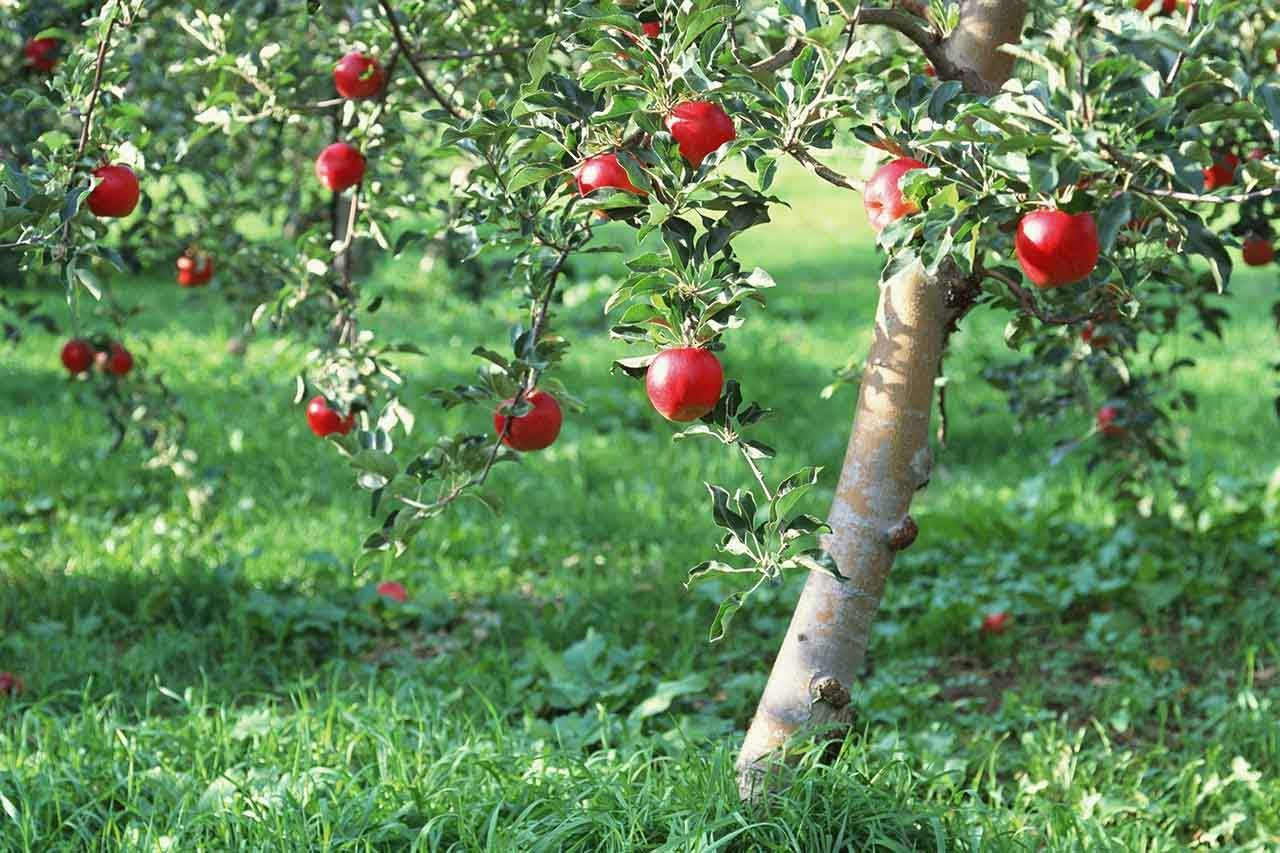Apple is one of the top produced fruit in the world. There are two types of apple as a matter of picking season; one of them is summer apple which ripens at summer and the other type is winter apple which ripens at autumn. These trees can grow up to 20-25 feet tall.
Normally apple trees like cold or slightly warm weather but they can also withstand 95-105 degrees F (35-40 degrees C) during hot seasons. Their blossoms and fruits will be harmed and fall at 30 degrees F (-2 degrees C). Grown apple trees can withstand cold temperatures like -30 degrees F (-35 degrees C) and 1 year old seedlings can withstand -4 degrees F (-20 degrees C). Apple trees don’t like hot weathers and their growth will stop at 105 degrees F (40 degrees C), hotter weathers than that may harm apple trees.
Most suitable soil for apple tree when pH is between 6 and 7. You can plant apple trees with 30 feet spaces. They also need 7 feet soil depth in order to grow properly.
Apple trees can’t feed excessive amount so fruit thinning is one of the vital parts if you are forming an orchard. Wormy apples must be removed in order to keep healthy apples safe.
After fruit thinning, size of the remaining apples would be much bigger.
Apple trees need chilling like any other plant and they need about 95-150 days in order to prepare the new season. If their chilling duration is less than they need, fruit amounts would be less. Temperature must be around 40 degrees F (5 degrees C) during chilling. Some of the blossoms might die because of insufficient chilling and bloom time may be delayed. Insufficient chilling causes death of some blossoms and bloom time might be delayed.
Planting The Seed
After extracting seeds from a ripe apple, you may plant them at once or you may apply stratification. Stratification seems necessary but I have experienced that we can get seedlings from apple seeds without applying stratification. But if you want to increase your chance, place your seeds into a jar and seal it, there must be some moist (just a little) inside the jar in order for sprouting, you may keep your seeds in refrigerator for about 9 weeks. The excessive amount of water would kill your seeds, be careful about that.
Stratification is keeping seeds in colder temperatures like a refrigerator (it is about 9 weeks for apple seeds) in order to fake the winter. Some seeds need to experience colder temperatures before planting. But if you are planning to plant them in autumn, there is no need to keep them in the refrigerator; if you have real winter, who needs to fake it?
When our seeds have sprouted, it is time to plant them. You may plant them in your garden but you may also use a pot. I recommend using a pot because such young plants may not be able to survive in your garden in the beginning, after 1-2 year you may plant it in your garden as a seedling. Place your seeds in a pot and cover it with a small amount of soil. Don’t water it frequently, the soil must be slightly moist.
If you bury very deep, it will be hard for seeds to grow and reach the sun.
Apple trees can’t pollinate themselves, they need another kind of apple tree to do that. When you plant an apple tree, it will be necessary to plant them in pairs, like a partner to each other. So you need two different kinds of seed in order to produce apples. You should also know that it may take 10 years to get apples from those seeds; if you don’t want to wait for that much, you may use seedlings.
Planting The Seedling
If apple seedlings will be planted somewhere with warm winters, they can be planted from autumn to spring; but if winters are harsh, it will be wise to plant them in spring. Actually planting apple seedlings in spring in places with harsh winters and planting them in autumn in places with warm winters would be more suitable.
Dig a hole with 2 x 2 feet width and 2 feet depth and place seedling in it. Try not to harm its roots while planting. After planting, water seedlings with only small amount of water and don’t water frequently in the first year of planting, it may kill the plant.
If you plant seedlings on somewhere dry, you may use 1-2 years old seedlings in order to increase the possibility of keeping them alive.






